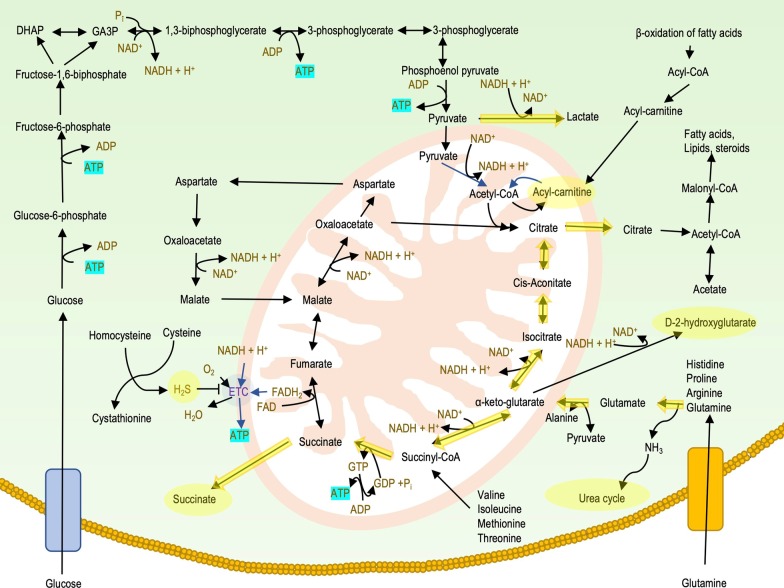Fig. 6.
Metabolic and bioenergetic alterations in DS. Upregulated pathways and metabolites are highlighted in yellow. As mitochondrial oxidative phosphorylation is suppressed in DS, cells downregulate various proteins of the electron transport chain and re-wire their energetic pathways. Glycolysis is upregulated, producing ATP and as a byproduct, lactate. Because the mitochondrial NADH consumption is inhibited, NADH does not enter the mitochondria through the malate-aspartate cycle, but, rather, it is converted back to NAD+ by lactic fermentation. As pyruvate is transformed into lactate, it does not enter the cyclic acid cycle. Similarly, lipids are also inhibited to enter the Krebs cycle and they are accumulated in the form of acyl-carnitines. As another compensatory pathway, glutamine, glutamate and other amino acids enter the Krebs cycle as 2-oxoglutarate and generate GTP, which can immediately be transformed to ATP and NADH. To oxidize the NADH, the Krebs cycle can run in reverse direction, thus producing citrate. As a result, various metabolites and enzymes involved in cyclic acid cycle are upregulated. As cells use amino acids as an alternative energy source, excess ammonia is generated (this can, in turn, be eliminated via the urea cycle)

